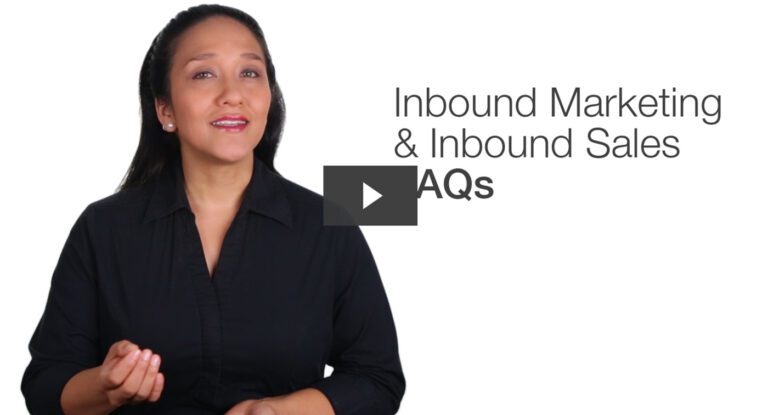When it comes to content marketing, people get so excited and hung up on the content creation process that sometimes the planning phase is just thrown out the window. In today’s In-Sites, learn how to build your own content marketing plan that fits your business with these three steps.
Content marketing represents the gap between what brands produce and what consumers actually want.—Michael Brenner
What is content marketing?
Before you can build an effective and personalized content marketing plan, let’s get on the same page first. Meaning, let’s define together what content marketing really means.
Content marketing is the process of creating and distributing valuable content to your audience.
Now content can be any medium. In fact, physical products and digital services are two types of content marketing examples. However, content marketing is commonly used when referring to online marketing. For example, the internet is a medium where you can host various types of content, i.e., your website, a blog series, videos, infographics, social media platforms, etc. Essentially, anything you create is content.
So what’s the confusion about content marketing?
Content marketing seems pretty straight forward. Yet, confusion always happens during the creation phase. When creating your content, you have to be sure you’re creating something that is relevant to your audience’s lifestyle right now.
For instance, you’re an inbound marketing agency, and you find that your audience needs help determining whether they should keep their marketing in-house or if they should outsource. Your job then is to not only create valuable content that will help them make that final decision, but ultimately, your content should make them take action toward your business’ services.
As you invest value in your audience, make sure that what’s valuable to you is also included in your content. For more information about defining content marketing, watch this quick insight provided from fellow partner, Amy Schmittauer:
Now it’s time to create your content marketing plan!
Step 1: Perform a content audit
A content audit is where you comb through your existing materials—looking for consistency as well as inconsistency across the board. A content audit helps to align every piece of content that you create with your brand message and your audience’s needs. For example as you are going through your content, write down the following items based on the process provided by HubSpot:
- Content Title: Write down the title of your content. Whether it’s the title of a blog post or an eBook, visualize your brand’s past writing style by writing out your past content titles.
- Stage in the Buyer’s Journey: What stage in the buyer’s journey does this piece of content represent? Map out how your content either addresses the Awareness. Consideration, or Decision stages. For example, you may notice you have more Awareness stage focused blog posts than Consideration or Decision stage focused posts. With this information, after you’ve finished your content audit, you know now to create more Consideration and Decision stage content in the future.
- Format or type of content: A blog post, an infographic, a video, an eBook, and a webinar are just a few different types of content that you may have currently in your arsenal. However, if one of your goals is to increase visual content creation, then this content audit will give you the proof you need to move forward.
- Buyer Persona: Finally write out which one of your buyer personas is this content targeting specifically. You should have at least two to three buyer persona profiles that make up your target audience. If you’re unsure about who this content is specifically targeting, you may have too many general pieces of content. The more specific you can be in your marketing, the better. And the best way to do that is through your buyer personas.
Key Takeaway: Take these four items and use it as a guide during your content audit. Without a content audit, it will be harder to find specific examples of spaces that need improvement or an increases or decrease in creating certain types of content. Take your time, be thorough, and revisit your past materials in order to improve your content for your audience.
The easiest way to turn off your community members is to broadcast the same message across multiple channels. Instead, determine the kind of content that interests the members of your community in a way that is useful to them.—Joe Pulizzi
Step 2: Choose topics around what you know and what your audience is asking for
What are some topics that you know best? In fact, what three topics does your audience generally come to you for answers?
You don’t want to oversaturate your content with too many topics. Limit your content with two to five topics max. That way, your audience knows clearly what your business can solve for them. Also, having minimal topics will benefit your metrics later. For instance, let’s say you focus on inbound marketing, web design, video, and advertising. However, through your content audit and analytics, you realize that there is a high interest in web design and video. With that information, you know for future content planning to create more web design and video focused content.
What helps people, helps business.—Leo Burnett
Step 3: Create monthly goals and content action items
Generally, you may have quarterly and annual goals. But what do your monthly goals look like?
Long term goals are great for establishing annual goals and can even be used as a benchmark for your quarterly goals. In contrast, short term goals work great with bi-weekly or monthly goals, because they’re the small steps that will hopefully lead you towards achieving your long term goals.
So as you create your content marketing plan, take the time to create some monthly short term goals for your content marketing plan. And mind you, you still want to make them SMART. SMART goals or Specific, Measurable, Achievable, Realistic, Time based goals are necessary to mapping out what you really want your content marketing to do for you.
For example, your annual goal is to increase sales in your online video service by 10% due at the end of the year. Your monthly goal would then be to create a video marketing campaign—creating video marketing tips, tricks, and best practices based on your success stories that you’ve experienced as an online video service provider.
Key takeaways: Create one monthly goal along with three content action items. For instance, let’s say you want to achieve 750 monthly website visits while converting at least 9 of them into sales ready leads by the end of the quarter. This means that your monthly goal will be 250 website visits and converting 3 of them into leads by the end of the month. Your three content action items could be to write daily blog posts, host a live Q&A on social media, and send weekly lead nurturing emails.
Whatever your goal is narrow it down to one monthly goal and then create three content action items that you and your team can commit to during the month. Be sure to measure its success as you go. That way, you don’t have to reinvent the wheel each time.
Finally, plug all this into a content marketing editorial calendar. This calendar will not only show your goal and your action items, but it will help with accountability. Pick three people to lead each action item—making sure it is seen through to completion.
For more information on how to improve your content marketing and allow it to help you market your brand, check out the following In-Sites video:
The reason we struggle with content marketing is because we haven’t started with ‘Why?’ Customers don’t care about your vanity metrics. Ask them, ‘How can I help?’—Kristina Halvorson
Subscribe to our BLOG
Stay in touch & learn how to attract customers, become a thought leader, create effective marketing campaigns, & more.





